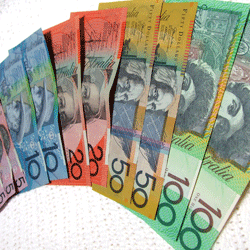
The strengthening Australian dollar is worsening the situation for many local retailers
Online GST battle gains momentum
Posted December 07, 2010 | By Sonia Nair
Calls for a reduction of the $1,000 GST threshold for goods bought online are intensifying in the lead-up to Christmas.
Australian Retailers Association (ARA) executive director Russell Zimmerman urged the Government to consider lowering the threshold, claiming that it creates an unlevel playing field for local retailers.
The retail industry is facing a bigger threat than ever from overseas businesses targeting Australian consumers, as the parity of the Australian dollar increases the likelihood of consumers shopping online for bargains during the crucial Christmas trading period. It is unknown how much overseas online competition is affecting jewellers.
Zimmerman said, “We currently have a situation where there is no GST or import tax charged for overseas goods less than $1,000; the Australian dollar is almost matching the US dollar and many overseas online shopping sites offer free delivery and easy return options.”
He estimated Australian consumers spend almost $6 billion on offshore online product a year. It has been suggested that the GST threshold should be reduced to $400.
National Retail Association (NRA) executive director Gary Black agreed that the $1,000 threshold should be abolished.
“The $1,000 tax-free threshold is unique to Australia, with countries such as the United States, United Kingdom, Canada and New Zealand all imposing varying amounts of tax, duties and charges,” Black pointed out.
Department store giant Myer has also waded into the debate by announcing that it will launch an online sales site in February that will ship items directly from a warehouse in southern China to consumers in Australia, thus avoiding paying GST to the Government. Electricals retailer Harvey Norman is considering following suit.
Black claimed that the high tax-free threshold and strong Australian dollar had led some overseas retailers to reduce their product prices to below $1,000 in order to avoid GST.
Black said such retailers were further encroaching on local retailers’ market share.
“This issue looms as one of the biggest threats that bricks-and-mortar Australian retailers have faced for decades,” Black said.
“Increased compliance checks by Customs to crackdown on this fraudulent practice would represent an immediate and practical first step to help local retailers.”
However, reducing the GST threshold on imported goods represents a far more serious challenge for the Government.
This is the second time in a year that the Government has reviewed the $1,000 GST threshold. Earlier this year, it rejected calls to reduce the limit after a review by the independent Board of Taxation.
RMIT Lecturer Christine Peacock who specialises in taxation said although the Government was considering introducing a lower GST threshold for imported goods, it would be a few months at least until anything concrete was finalised.
“It would be an administrative nightmare to monitor every little online transaction. The Government is looking at this issue again given the furore surrounding it but they have to carefully administer it,” Peacock said.
More reading:
Jewellers without websites are missing a trick
Why small retailers can thrive online